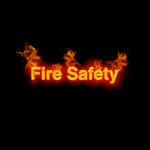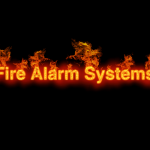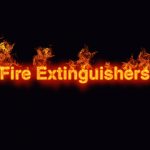In the United Kingdom, fire safety legislation, in general, applies to all non-domestic premises. It includes all workplaces and commercial premises, including those that are managed by the self-employed and voluntary organisations as well as all premises that the public has access to in Wales and England, and the common areas of residential buildings like houses and flats that have multiple occupancy.
As an employer, you have a duty to conduct a fire risk assessment under the appropriate fire safety legislation. Similarly, if you occupy or have control over a non-domestic premise or you own it and it is empty, then most likely you have this same duty.
We are providing this guide to help those who have this responsibility. In this document, we will be referring to them as ‘responsible person.’ It is intended to help those who have decided to conduct a fire risk assessment to keep their premises in compliance with the fire safety legislation that is applicable in their country:
– In England and Wales: Regulatory Reform (2005 Fire Safety Order).
– In Northern Ireland: 2010 Fire Safety Regulations and Fire and Rescue Services (Order 2006)
– In Scotland: Fire Safety Scotland Regulations (2006) and Fire Scotland Act (2005)
What a fire risk assessment does is identify potential hazards and the actions that need to be taken in order to keep people on the premises safe. It must be kept current and reviewed regularly, especially when something changes that might affect fire safety or there is any other reason why it might no longer be valid for a building, such as after a fire, a change in contents, or change in occupancy.
Can I conduct my own fire risk assessment?
Responsible person – especially in low risk and small premises might be able to conduct their own fire risk assessments, through using the guidance that the websites listed above provide.
Those that conduct their own fire risk assessments must be able to do the following:
- Identify fire hazards (potential fire causes)
- Identify individuals at risk
- Assess all fire safety measures that are required and/or provided for protecting people like fire alarm systems as well as clearly defined escape routes
- Review arrangements for fire safety management (e.g. fire precaution maintenance, fire drills and employee training, fire procedures, etc.)
- Get an action plan formulated
- Record significant findings and get an action plan implemented, if necessary.
- Keep assessment updated.
When the assessment is done in-house there is the advantage that you own the process and ensure that you understand what precautions need to be taken in order to adequately protect people.
However, you need to be aware of your own limitations. If after you read the guidance you feel that you don’t have an appropriate understanding or knowledge of fire safety and risk of fire to people in order to effectively comply with the legislative requirements, or you cannot invest a sufficient amount of resources and time to do this important task justice, then you will have to have a specialist conduct the risk assessment on your behalf. The specialist must identify all of the necessary fire safety measures that must be in place. In addition, you should stay closely involved in this process.
Appointing a specialist to conduct a fire risk assessment
The responsible person is always responsible for ensuring that the assessment is adequate no matter who conducts the fire risk assessment. If you employ a specialist to conduct a fire risk assessment for you, although you are not required to be a fire safety expert, you should do reasonable checks of your own to ensure the specialist is competent to do the job correctly.
The following are some basic precautions and step that you can take in order to help you verify the suitability and competence of a potential fire risk assessor:
- Make sure that the fire risk assessor who will be providing the service is qualified to do so. It is recommended that you check that the individual providing the service has certification from, or independent registration with, a certification or professional body that indicates they have met the Fire Risk Assessment Competency Council’s established competency criteria. See the following list.)
- Check to ensure they have experience conducting fire risk assessments for your type of premises or business.
- Request references from past clients with your type of premises. Ask the clients if any problems were identified later and if they were satisfied with the assessor’s work.
Also, do the following:
- Make sure that the scope of the work that you want to have done is agreed to in writing.
- Make sure that the assessor is provided with all relevant information and has access to all parts of your premises.
- Obtain other quotes – be sure the same scope is covered, so that you can compare like services.
- Ask the assessor for proof of having sufficient public liability, professional indemnity insurance, and that they are impartial and that, if necessary, there will be a complaints procedure that you have access to.
- Make sure to have adequate records of all of the steps that you took when choosing the fire risk assessor to hire.
It is very important that the individual who conducts your fire risk assessment is reputable and competent. Individuals can demonstrate their competence in two main ways:
- Certification from a UKAS accredited Certification Body for the activity.
- Professional Body Registration schemes.
It is also very important that the fire risk assessor’s employer or company has adequate management systems instituted, even for self-employed assessors. A company’s competence to provide fire risk assessments may be demonstrated through the company having third-party certifications from a Certification Body that is UKAS accredited.
It is recommended by the Fire Risk Assessment Competency Council that fire risk assessment companies be used, which includes for sole traders, that are third-party certified for appropriate schemes that are operated by UKAS accredited Certification Bodies for certificating these schemes.
Responsible persons are not required to be expert in certification schemes and registration. The following information can provide you with a better understanding of the schemes and the way they are run.
- A ‘scheme’ identifies which assessment methods will be used and what needs to be assessed. There are several schemes that relate to fire risk assessment.
- A ‘company’ scheme is managed by a certification body that assesses the competence of a company’s management systems and personnel.
- A ‘person’ certification scheme is managed by a certification body. It concerned with the individual’s competence and not the company’s.
- A ‘professional body’ scheme is managed by a professional body. It is concerned with the individual’s competency and not the company’s.
A registry is maintained by all schemes, which lists companies or individuals that have been assessed and that meet that scheme’s requirements.
Certification Bodies: Assess the company or individual fire risk assessor against the scheme’s requirements.
The United Kingdom Accreditation Service (UKAS) accredits third-party Certification Bodies for the work that they conduct. The Government recognises the UKAS as a national accreditation body for that purpose. Certification Bodies are accredited by the UKAS against internationally agreed upon standards, in order to confirm that they are correctly assessing against ‘scheme’ requirements.




